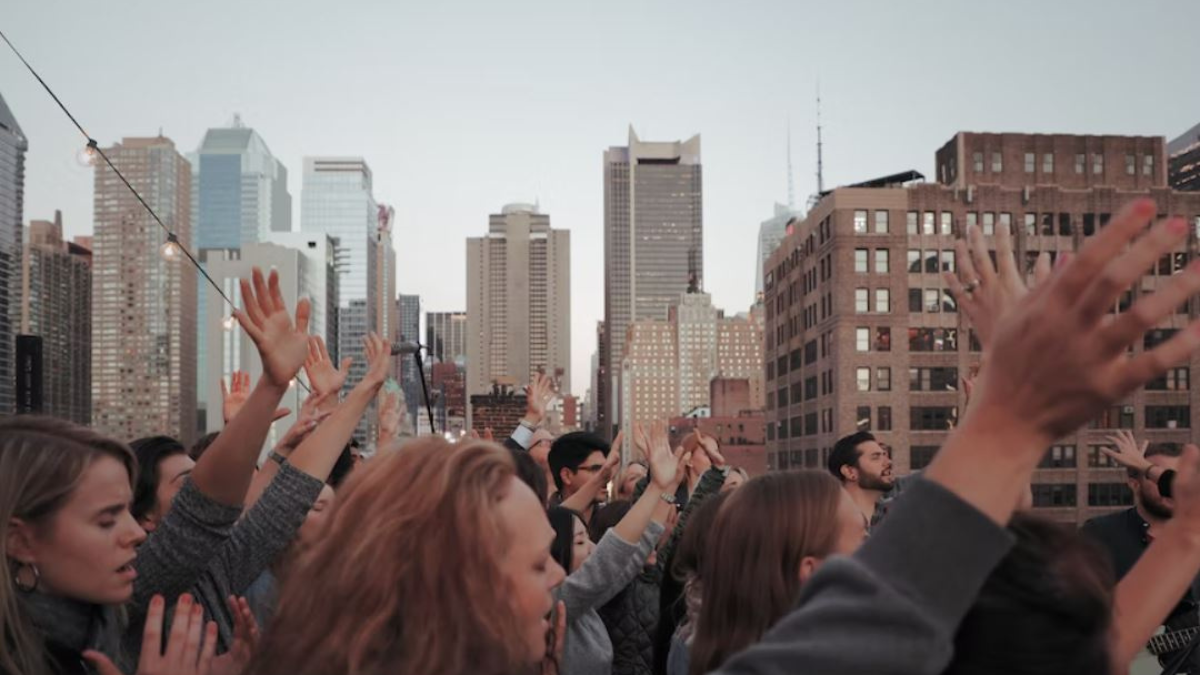

Asbury and the History of American Revivals
Revivalism, with a focus on a personal faith with public implications, dramatically shaped American life and culture.
02/21/23
John Stonestreet and Glenn Sunshine

Two weeks ago, what started as a routine (and according to the preacher, “lackluster”) chapel service at Asbury University became something remarkable. Instead of heading off to classes, students stayed to pray and worship. Services have continued ever since, with people traveling from near and far to join in prayer, repentance, and song. What is being called a “revival” by some and an “awakening” by others has now spread to other Christian colleges.
The past few days echo the revivals that were experienced in the recent past on other Christian college campuses, including one at Wheaton College in 1995, and those at Asbury in 1970 and 1950. In each case, there were seemingly spontaneous expressions from students of prayer, confession, and praise. The revivals of the past are an indelible part of Asbury’s historical memory, and many who experienced the 1970 revival have prayed ever since for it to happen again.
Revivals have been, in fact, a consistent, distinct feature of American religious life since before our nation’s founding. The First Great Awakening, in the early 1700s, was part of a larger, trans-Atlantic spiritual renewal centered on personal conversion, an emphasis that had a transformative effect on the emerging American consciousness. The idea that a genuinely converted, common ploughboy was spiritually ahead of an unconverted bishop contributed to a growing anti-hierarchical attitude in the colonies. This, in time, contributed to a growing anti-monarchial mood, setting the stage for revolution.
The Second Great Awakening, which swept the nation decades later, coupled a similar focus on conversion with postmillennial eschatology. Among the results was a drive for social reform. Abolitionism, temperance, and efforts against prostitution became calling cards of what came to be known as evangelicalism.
Other revivals followed, and most included an added focus on foreign missions. The Prayer Meeting, or Businessman’s Revival, of the 1850s was followed by revivals in the camps of both armies during the Civil War, the urban efforts and revival preaching of D.L. Moody of the 1870s and 80s, and the theatrics of Billy Sunday’s revivals of the turn of the century. Soon after came the Azusa Street Revival in California, which led to a massive growth of Pentecostalism and the charismatic movement worldwide, and then eventually led to the Jesus People of the 1970s.
And those are only the “big” ones. Simply put, revivalism, with a focus on a personal faith with public implications, dramatically shaped American life and culture and is a major reason that America remained more religious than Europe for so long. At the same time, revivals and revivalism have always faced a good deal of criticism, including charges of excess, hyper-emotionalism, manufactured techniques, and anti-intellectualism.
Jonathan Edwards, a major figure of the First Great Awakening, understood the dangers inherent to revivalist fervor, but he also believed in these unusual times when the Holy Spirit moved among a people. Perhaps America’s greatest intellectual, Edwards prayed and worked toward revival, and he offered criteria for evaluating it. According to Edwards, a true work of the Holy Spirit elevates Christ, opposes sin and Satan, prizes the Bible, distinguishes truth from error, and manifests love. He also understood that in the midst of such a movement, there would be things to oppose as well.
All of this is helpful as we try to grasp what has happened at Asbury, and now beyond, over these last two weeks. We’d do well to remember Jesus’ warning that there will be tares among the wheat, and that the remarkable times in which the power of God and goodness of Christ are made manifest are ways in which God graciously prepares us for life off of the mountaintops. Though, like Peter and John, we may want to remain in such times and places, He will eventually have work for us to do elsewhere. Critics would do well to recall the history of God working through awakenings and revival, both in this nation and elsewhere, as well as the faithful who sincerely believe that God has answered their years of praying for revival to return to Asbury.
What we can all be sure of (and thankful for!) is that God is constantly at work in His world, sometimes in extraordinary but most often in “ordinary” ways. God is constantly speaking through His world, through His Word, and ultimately, in His Son. May we have the ears to hear Him. And may He grant us the hearts to pray that an awareness of sin and a passion for God and His people would grow in the hearts of these students, long after the mountaintop high of the revival has faded in their memory.
This Breakpoint was co-authored by Dr. Glenn Sunshine. For more resources to live like a Christian in this cultural moment, go to colsoncenter.org.
Have a Follow-up Question?
Related Content

© Copyright 2020, All Rights Reserved.














